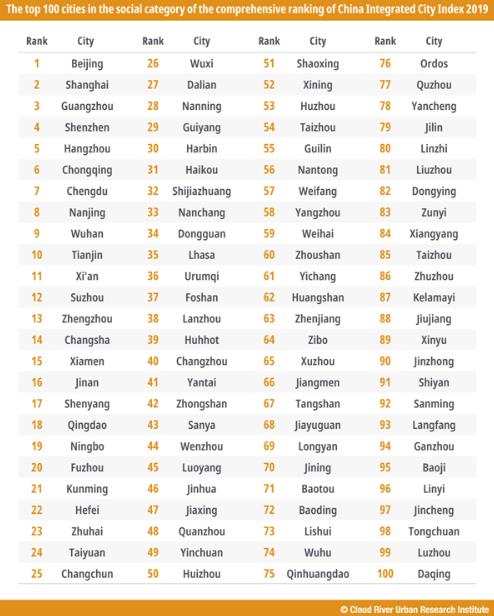China Integrated City Index 2019 ranks 297 Chinese cities


Du Ping, vice chairman of Cloud River Urban Research Institute, and former vice executive director of the State Information Center
With available English and Japanese versions, the China Integrated City Index is a major set of indicators that have a global influence and provides food for thought for local governments, the academia, businesses and stakeholders in various sectors.
I want to say that the China Integrated City Index has its unique features.
First, it guarantees data integrity and accuracy. China Integrated City Index has pioneered a data collection and processing system sourcing from three major areas, with around 30% coming from statistical data, 30% from satellite remote sensing data, and 40% from internet data. The system can acquire sufficient and accurate data timely to support the validity of the Index's structure.
Second, the Index is based on available, comparable and regressable data. The China Integrated City Index is a 3*3*3 multi-modal index system with closely related but independent data sets. In Chinese culture, our planet is a huge system composed of the heaven, earth, humanity and all other living creatures. China's ancient philosopher used the idea of "One produced Two; Two produced Three; and Three produced All Things" to generalize the changes of this huge system in an abstract way. Obviously, the 3*3*3 framework agrees with this philosophy. Seen from its design concept, the logic relations between the indicators and the whole framework, the China Integrated City Index aims to reveal the relevance between each dimensions and sub-dimensions within a city as well as between different cities. To put it simply, the Index measures urban development on the top level in three dimensions: environment, society and economy, under which there are 9 sub-dimensions on the second layer followed by another 27 smaller dimensions on the third layer, all supported by a total of 878 data sets. Therefore, the China Integrated City Index can not only measure the development trends of each city from a macro level, but also evaluate the changes in different dimensions and areas of a city, as well as the changes in urban structures. I believe it is valuable in navigating high-quality and sustainable urban development.
Third, the Index has created a set of new indicators to mirror the cities' development trends. For example, we can see the scope as well as the quality of urban development from the DID Population indicator; and you can also analyze the relations between industrial development and urban functions from the manufacturing radiation, IT industry radiation as well as indicators like opening and communications.
Fourth, the Index includes the comparison between Chinese cities and their international counterparts. For example, the China Integrated City Index compared major indicators between Beijing and Tokyo metropolitan areas after the 21st Century and effectively and objectively pointed out the problems and future development of China's metropolitan areas.
In conclusion, the China Integrated City Index is a forward-looking and strategic index system that can help navigate China's high-quality urban development.
- Record ocean heat in 2025: a deepening climate challenge
- Beijing offers free two-dose bivalent HPV vaccination for girls
- Hunan students craft opera headpieces from recycled materials
- Haidian police crackdown on campus fraud with new safety model
- Several BRICS countries to conduct maritime military exercises near South Africa
- Shanghai to launch year-long global food festival in 2026




































